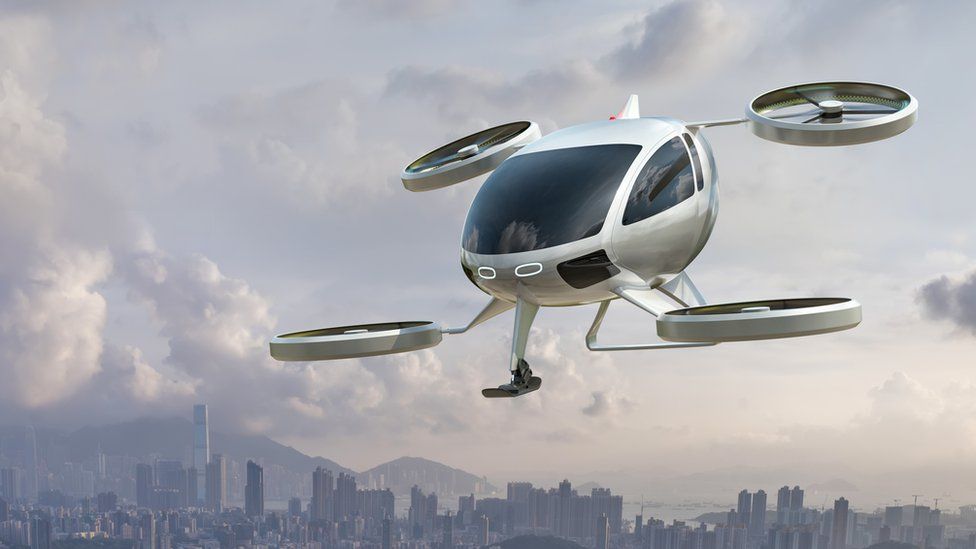
Riding Into The Future: How Automated Taxis Will Shape Transportation
22 Mar, 20245 mins
In hindsight, Uber was just the start.
Taxis have been around for as long as humans have. They’ve changed a lot along the way, of course. Every advance in transportation technology — such as the wheel, the internal combustion engine, and the ride-hailing app — has made its mark on what the modes of transport people hire to get around towns and cities looks like.
However, rapidly advancing technology means that taxis might be about to undergo the most dramatic period of disruption in their history.
From Manual to Automatic
Taxi drivers used to be urban experts. Those operating London’s iconic black cabs had to take a test called ‘The Knowledge’, which required an encyclopaedic familiarity with the city’s labyrinth of winding, interlinked streets.
GPS mapping technology, via Uber and other ride-hailing apps, removed the necessity for The Knowledge (though hundreds of residents recently signed up to take the test for free under plans to safeguard the future of the black cab industry). But this is only the first step in the automation of the taxi business.
Automated cars are under development by companies the world over, and the likes of Tesla could soon usher in a world where every car owner also runs a taxi business.
As Cathie Wood, the famous disruptive innovation investor, recently told the OPTO Sessions podcast, autonomous cars will allow their owners to travel to work in their car, then lease it out as an autonomous taxi while they’re there.
This is a really groundbreaking step, for all sorts of reasons. For one thing, it will change the taxi industry completely. It’s easy to view this as a bad development for today’s taxi drivers: however, from another perspective, it will enable current professional taxi drivers to pursue side hustles or leisure time pursuits while their car does their job for them.
Equally, though, it could unlock an enormous amount of productivity. Wood’s investment firm, ARK Invest, published research last year that estimates that autonomous taxis could have a greater impact on global GDP than any other innovation in world history.
ARK reached this conclusion by weighing the potential safety impacts of autonomous taxis and the consequent gains from working time lost to victims of accidents, the service revenues that owners will be able to gain by leasing them out, and the productivity gains as a result of not needing to drive the car (freeing people up to either work or consume leisure services while they travel).
Weighed against a few downside costs — such as reduced medical insurance fees as a result of safer roads — ARK estimates that autonomous taxis could realise $26trn in net gains by 2030, equivalent to 2–3% of global GDP. If true, this would be “greater than the combined boosts delivered by the steam engine, robots, and IT”, according to ARK.
How Far Away Are Self-Driving Cars?
Robotaxis are already being piloted in several US cities. 29 US states, plus DC, have already passed legislation relating to driverless cars.
California is, unsurprisingly, a hot spot. Data from the state’s department of motor vehicles (DMV) shows that driverless cars covered 3.3 million miles in the state last year, five times more than in 2022.
99% of these miles were covered collectively by GM’s Cruise and Waymo, from Google’s parent company Alphabet. Cruise accounted for approximately two thirds of the miles travelled, while Waymo accounted for most of the remainder.
While the US is a leader in autonomous car legislation, many other countries are now getting in on the act. The UK announced plans for an Autonomous Vehicles in the King’s Speech in November, while Beijing authorised an autonomous taxi service to start trading in September.
Hamburg is another hotspot: a network of autonomous shuttle buses already operates in the city. It is also the home of another innovative take on the ride-hiring theme. Last February, ‘teledriving’ pioneer Vay won approval for the first driverless vehicles to operate on European roads.
Under Vay’s model, a remote driver based in Vay’s centre, equipped with all the necessary controls, navigates the car to a customer that has hailed it on the app. The customer then takes control of the vehicle, drives it to their destination, then returns control of the car to the remote operative once they’ve arrived.
As for the technology, the distances that Cruise and Waymo covered in California shows that driverless cars are already more than capable. However, they are prone to the occasional glitch. A Cruise car hit and dragged a San Francisco pedestrian in October, leading to the recall of all 950 of the cars in its fleet and the suspension of its licence.
However, as the technology improves, it will overcome such problems. Driverless cars are becoming safer all the time. Even at their current stage of development, they appear to be safer than human-driven cars: data from Waymo suggests that its cars are 6.7 times less likely than human-driven cars to be involved in an accident causing an injury.
Who’s Making Autonomous Taxis?
Besides Waymo and Cruise, Tesla is probably one of the most recognisable names in the space. Tesla’s autonomous car technology has been under development for years, but is lagging behind its own deadlines for the technology.
One particularly exciting name in the field is Conigital. This Birmingham based company became Europe’s best-funded autonomous vehicle start-up when it secured a £500m Series A in September. Conigital builds retrofit driverless vehicle platform that creates driverless vehicles for industrial and commercial fleets.
Could Flying Taxis Take Off?
Obviously, the prospect of every car owner’s vehicle doubling as a taxi within a few years could lead to some clogged roads. Fear not, though. The flying taxi is just around the corner, waiting to carry its passengers gracefully above the gridlock. Joby, a California-based firm developing flying taxis, could see them launch in Dubai as soon as 2026 (or even late 2025). Europe could see flying taxis arrive even sooner. Volocopter, a German firm, hopes to have its Volocity flying taxi service operational in Paris in time for the Olympic games in the city later this year. Obstacles remain in the form of regulatory clearance and engine supplies, but either way, the future of the flying taxi is closer than we might think. Whatever the immediate future holds for autonomous and flying taxis, it’s clear that hired transport has come a long way since the horse and trap.
If you’re looking to build the future of the transport sector, speak to our team of consultants about how we can match you to innovative companies, or candidates, within the field.

